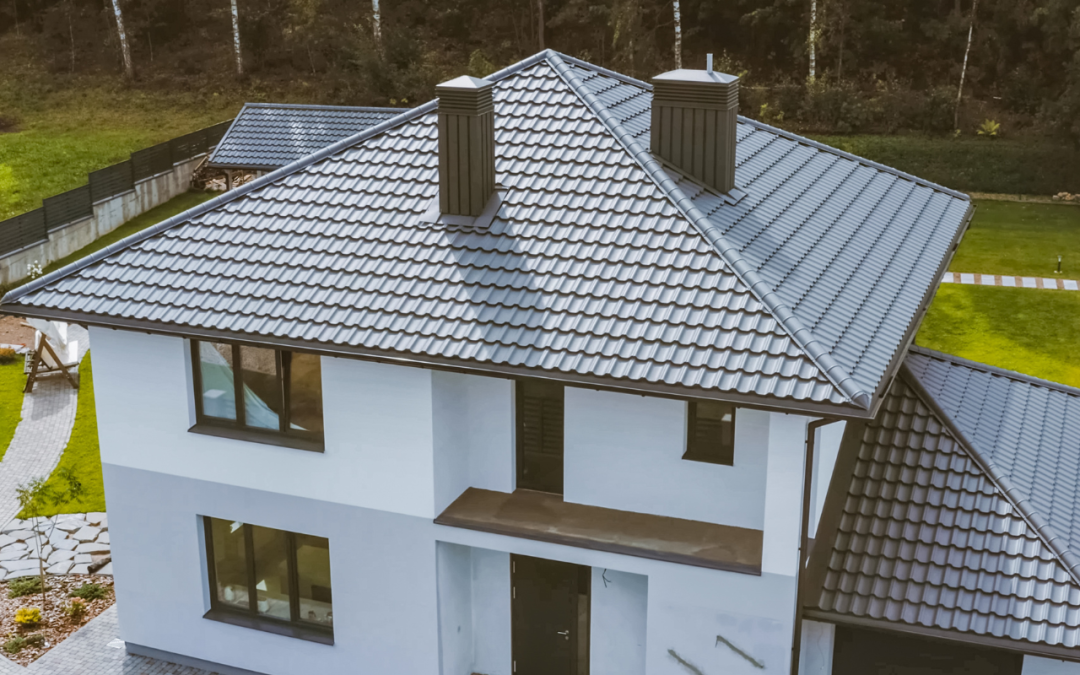
The roof is more than just a protective shield for your home. It’s a statement of style, sustainability, and innovation.
Roofing trends have taken center stage in the ever-evolving world of modern architecture and design. The roofing world is experiencing a transformation driven by a fusion of environmental consciousness, technological advancements, and a quest for architectural beauty.
Let’s explore the roofing trends shaping modern homes’ future, where innovation and design meet to create a better, more beautiful world.
1. Sustainable Roofs
Sustainability is a key focus for modern homeowners. Roofing materials such as recycled metal, cool roofs, and solar roofing tiles are gaining popularity.
Green roofs with living vegetation are also used to improve energy efficiency and reduce stormwater runoff. It helps regulate temperatures by absorbing and releasing heat slowly, reducing the urban heat island effect.
Reflective or cool roofing materials reduce heat absorption, leading to lower cooling costs.
2. Metal Roofing
Metal roofing is a versatile option that comes in various styles and finishes. It can mimic the appearance of traditional materials like shingles, tiles, or wood shakes while offering superior durability and longevity.
Metal roofing is fire-resistant, insect-resistant, and rot-resistant. Metal roofs are relatively low-maintenance. Regular inspections and cleaning can help ensure their longevity.
3. Flat Roofs
Flat roofs are slightly sloped to facilitate drainage. The specific construction method can vary but often involves a waterproof membrane or roofing material applied over a flat or low-slope deck.
These roofs are easily accessible, which can simplify maintenance and the installation of rooftop equipment such as HVAC units, solar panels, or satellite dishes.
It can house equipment or provide additional living or recreational space, such as rooftop gardens, patios, or lounges.
4. Synthetic & Composite Roofing Materials
Synthetic and composite roofing materials are engineered alternatives to traditional roofing materials like natural slate, wood shakes, or clay tiles.
Synthetic roofing materials are typically made from polymers, plastics, or rubber. They are designed to replicate the look of natural materials such as slate, wood, or cedar shakes.
Composite roofing materials are typically composed of a blend of materials, including fiberglass, asphalt, recycled materials, and minerals.
Synthetic and composite materials are often more budget-friendly than natural materials while providing a similar aesthetic.
5. Asphalt Shingles Roofing
Asphalt shingles offer a classic, timeless look that complements various architectural styles. These can be installed quickly, minimizing disruption to the homeowner’s daily life during the roofing project. This ultimately reduces labor costs as well as installation time.
These are available in various styles and colors, allowing homeowners to achieve various architectural looks and curb appeal. Asphalt shingles are relatively easy to repair or replace if damaged, which can extend the roof’s life.
It is readily available in most regions, making it easy to find replacement materials.
6. Slate Roofing
Slates are one of the most durable roofing materials. It lasts for 75-200 years. It is prized for its timeless and elegant appearance, adding character and curb appeal to residential and historic buildings.
It requires minimal maintenance, making it a hassle-free option for homeowners.
If you’re interested in this, you must contact the best slate roof installers for the perfection and durability of the roof for your home. They can help cut slates into various shapes and sizes, allowing for diverse design possibilities.
7. Energy-Efficient Roofing
Are you looking for ways to reduce your energy consumption and costs? Cool roofing materials like white or reflective membranes help lower indoor temperatures and reduce air conditioning.
Additionally, integrated solar panels and energy-efficient insulation are incorporated into roofing systems.
More than 25 million households rely on solar PV today, and expected to grow by 100 million by 2030.
8. Architectural Roof Designs
Architectural roof design enhances a building’s visual appeal and can contribute to its overall character and style. It can make a statement or blend seamlessly with the surrounding environment.
The design of the roof impacts its functionality. Proper slope and drainage are essential for managing rainwater and snow. Well-placed features like skylights or roof decks can add space and comfort.
A well-designed roof can increase a property’s resale value by enhancing curb appeal and desirability.
Now, you have a vivid picture of roofs and exciting possibilities in reshaping your home. Roofs can now do more than shelter you. They can actively contribute to a greener planet, lower energy consumption, and reduce carbon footprint.
The roof has become a canvas for expression and a beacon of sustainability in modern homes. So, as you start your roofing journey, remember that the sky is the limit, and your roof is the canvas.
Choose wisely, dream big, and let your roof reflect the innovation and artistry of modern living.





